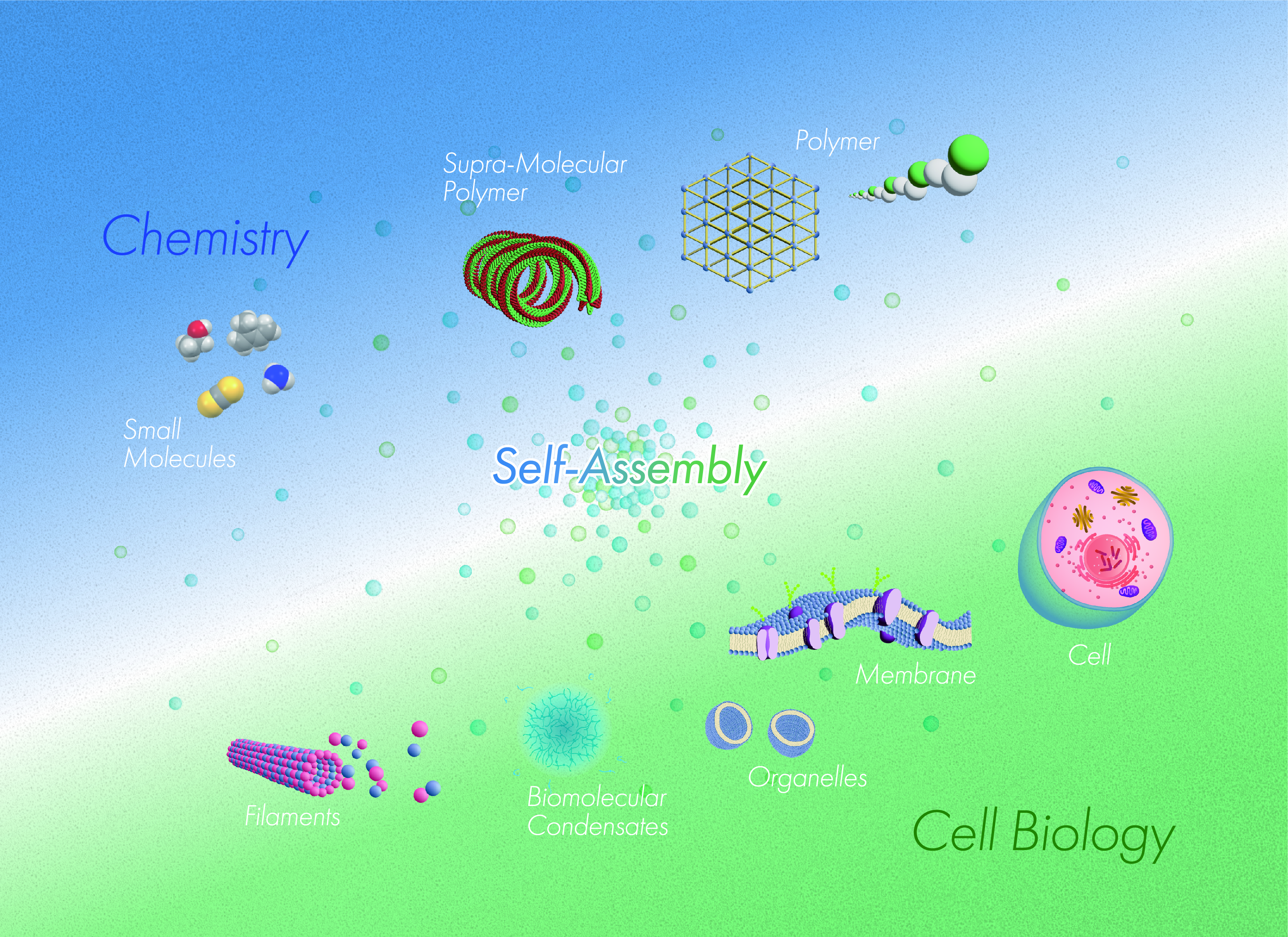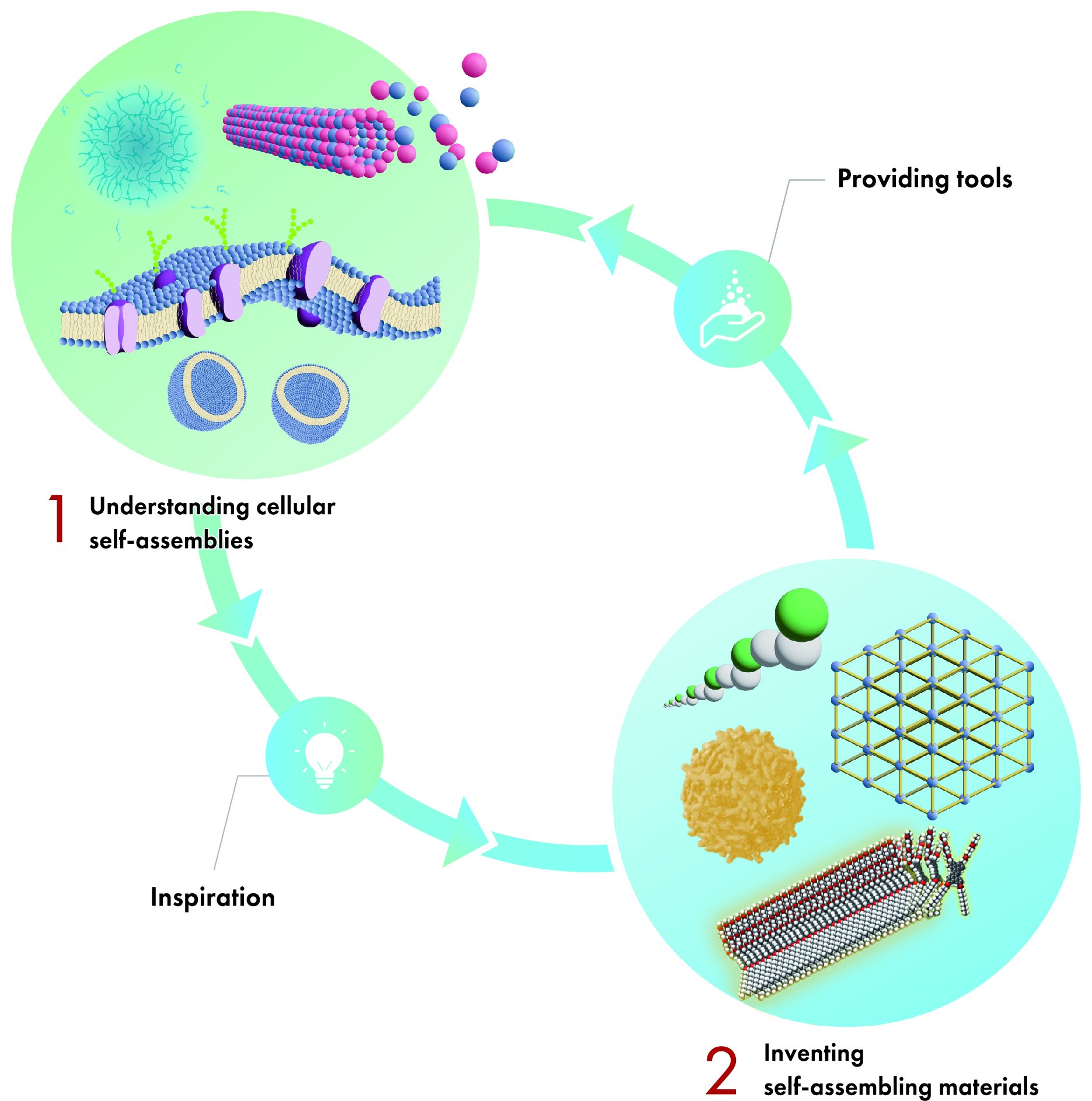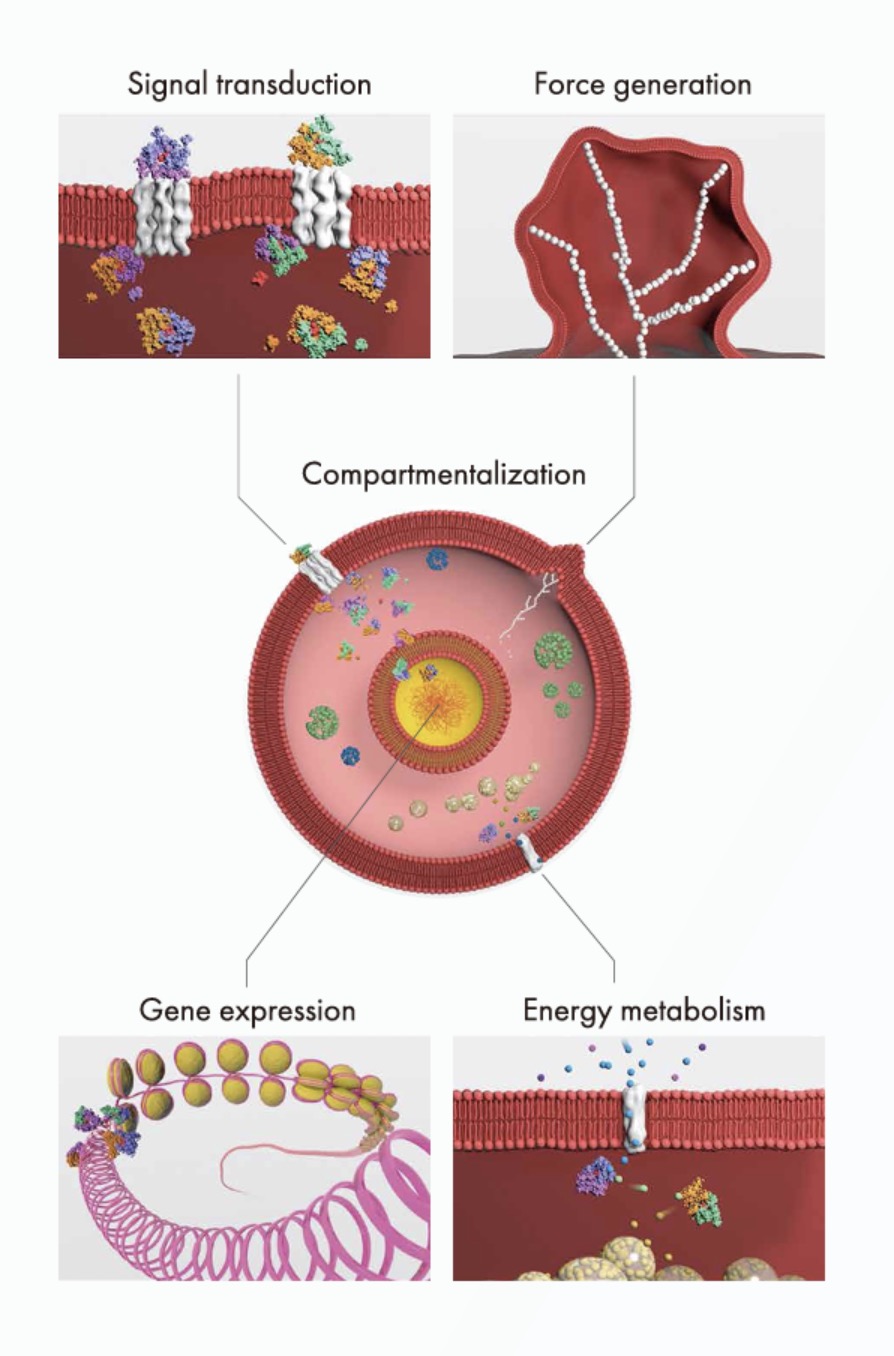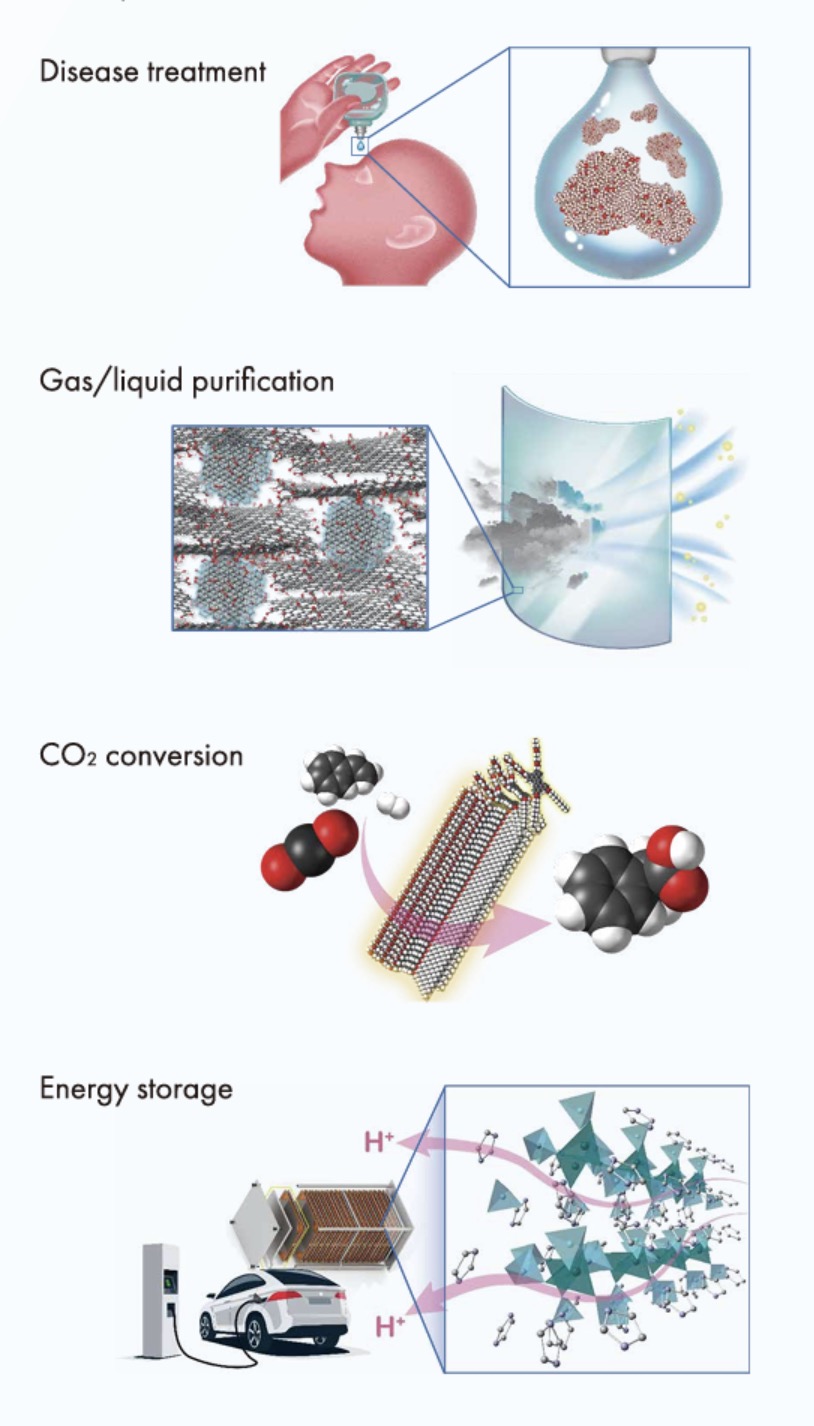Our Research
Exploring the Principal of Self-Assembly
In April 2023, Motonari Uesugi became the new director and iCeMS redefined its research vision around the fundamental theme of self-assembly. Through the coordinated fusion of cell biology and chemistry, we endeavor to understand the intracellular self-assemblies at the boundary between life and matter (science) and inspire the innovation of functional self-assembling materials (application).

Director Motonari Uesugi
Born in Osaka, Uesugi graduated from the Faculty of Pharmaceutical Sciences, Kyoto University in 1990. After obtaining a PhD from the Kyoto University Institute of Chemical Research, he was a postdoctoral fellow at the Harvard University Department of Chemistry from 1995 to 1998. In 2005, he joined the Kyoto University Institute for Chemical Research as a professor. In October 2007, he also joined iCeMS as a professor. He also served as a deputy director and became director in April 2023.

Why Focus on Self-Assembly?
——Could you tell us about the motivation behind the creation of the new research vision?
iCeMS was originally established to integrate two of Kyoto University's flagship disciplines, chemistry and cell biology. Since its founding in 2007, iCeMS has brought together researchers from diverse fields and we have attained great research achievements. However, in order to continue to grow, we need to streamline decision-making and enhance creativity.
In 2023, when I took on the position of director, I revised the research vision with a fresh perspective for iCeMS. "The fusion of chemistry and cell biology" is a single phrase, but there are various ways to think about it, so l attempted to clarify it further.
I focused on the concept of self-assembly. Simply defined, self-assembly is a phenomenon where materials spontaneously assemble and begin to take on some function.
——What is the relationship between self-assembly and iCeMS specialties of chemistry and cell biology?
Essentially, living organisms are made from chemical compounds. But, chemical compounds are not life. When I try to understand at what point these chemical compounds begin to show life-like characteristics, I think self-assembly offers us a hint. A cell could be said to be the ultimate example of self-assembly. The cell membrane itself is also self-assembled, and inside the cell there are organelles, small structures also bound by membranes. By creating spaces in which chemical reactions can occur these types of self-assembled structures allow for intracellular communication, genetic development, force generation, or energy storage. It has recently become clear that all of these processes are made possible by self-assembly.
The reason for this recent understanding comes from the advanced development of "seeing" technology in the last decade. Life phenomena that were previously completely invisible have become observable in minute detail thanks to technological innovations such as electron microscopy. As a result, cell biology has tremendously advanced through the discovery of various self-assemblies around the world.
Is There a Common Language between Cell Biology and Materials?
——I understand that the study of self-assembly is relatively new in the field of biology, but what about in the field of materials?
In the world of materials, various forms of self-assembly have already been put into practical use and commercialization is underway. For the general public, supramolecular polymers may be easier to understand. A polymer is made of large molecules which are all stuck together. The small parts come together on their own to form self-assemblies. For example, car paint that if scratched can self-heal like a living creature has been developed. This is possible because the material is self-assembling. Looking at the history of materials, recently self-assembling materials are being used in manufacturing more and more. LCD displays are one self-assembling material many people are familiar with. PCP/MOFs which iCeMS former director Susumu Kitagawa has been hard at work on have been put to practical application in gas storage. These are very exciting innovations and they are all self-assembling materials which is why at iCeMS self-assembly is an important concept in materials science.
Originally, the materials world was closely related to self-assembly. In the biological world too, when we make careful observations, we also find many self-assembling structures.
We began to think that there might be some kind of shared boundary or common language between them, or perhaps some unifying theory between these two disciplines. Traditionally, each has been working on its own research, but there must be common ground between the two and our goal is to investigate those scientific principles. If we can advance our understanding of those principles, we may be able to create lifelike materials inspired by biological mechanisms which useful for humanity. Conversely, through using those newly created materials, we may gain a new understanding of biology. We believe a positive cycle could be born from here.
Understanding Self-Assembly Promises Significant Advancements
——It seems that understanding the mechanisms of self-assembly will lead to application. What kind of self-assembling materials do you expect will be created?
Looking to the future, I believe that self-assembling medicine will become a trend. The history of pharmaceuticals can be divided into chemical drugs and biological drugs.
Beginning with aspirin, chemical pharmaceuticals have undergone significant developments in organic synthesis leading to larger and larger compounds. The ability to create complex substances has led to the manufacturing of nucleic acid drugs, including mRNA vaccines.
Biological pharmaceuticals started from natural products and have developed in various ways. Originally, living things found around us were used to make herbal medicines. Insulin was discovered and used for treatment. Recently, cell therapy using antibodies and cells themselves as drugs is gaining popularity. At Kyoto University iPS cells are being used for therapy. The trend is that all drugs are becoming very complex and have a large molecular weight.
If we think about making something large and complex from small molecules, it appears to be possible if we think about self-assembly as the key point. We call this self-assembling medicine and we are trying to create the world's first.
Ensuring that fundamental research is firmly linked to practical application is another distinctive feature of iCeMS. We have implemented a system to return our research to society through developing startup companies, such as Atomis Corporation, which aims to commercialize Prof Kitagawa's PCP/MOFs.
——Lastly, I believe that creating something new is synonymous with bringing about innovation. Can you tell us about your aspiration for achieving this?
Many researchers from diverse fields have gathered at iCeMS around this way of thinking, that is "self-as-sembly chemistry and biology". It is crucial that we work not just within iCeMS but collaborate with other researchers working on self-assembly.
Understanding self-assembly will surely lead to good outcomes. Holding this expectation, working together with all of iCeMS, I aim to foster an environment where we can focus on our daily research.
Key Research Concepts


1 Understanding cellular self-assemblies
Life is the ultimate example of self-assembly. We will lead the way in understanding intracellular self-assembly mechanisms that govern compartmentalization, signal transduction, gene expression, and energy metabolism, as well as in developing the chemical tools that make that understanding possible.

2 Inventing self-assembling materials
Chemists can find inspiration in intracellular self-assembly. Drawing on that inspiration will lead to the creation of novel functional materials to face the challenge of resolving global problems. Self-assembling pharmaceuticals, self-assembling materials for gas or liquid purification, self-assembling materials for energy storage, and self-assembling materials that chemically convert carbon dioxide are being developed.